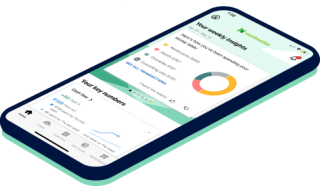[ad_1]
When you spend money on a product or service, there’s often the unspoken expectation that you’ll get exactly what you paid for. That relates to both the quantity and quality of a product or service. Sometimes that doesn’t happen, and in those instances, you may be experiencing shrinkflation.
What is shrinkflation?
Shrinkflation is when a company reduces the quantity or size of a product while keeping the price the same. Logically, people would expect that if they’re getting less of a product, the price would decrease, but this isn’t the case with shrinkflation.
Although the product prices stay the same, shrinkflation can still be viewed as a price increase since the cost per unit goes up. Likewise, shrinkflation can be seen as an elusive type of inflation because you are getting less bang for your buck.
A company’s motivations for shrinkflation could include struggles with profitability because of inflation or a desire to improve profit margins. Additionally, shoppers may be more likely to spot price increases versus changes to ingredients or fewer chips in a pack.
U.S. Senator Bob Casey, D-Pennsylvania, has introduced a bill called the Shrinkflation Prevention Act of 2024 that, if approved, would prohibit companies from reducing the size of their products without an accompanying price decrease.
Examples of shrinkflation
There are a range of products that you could end up being shortchanged for, including toilet paper, ice cream, coffee, cleaning products, chips or rice. For instance, a business may have charged $5.99 for a 5-pound bag of rice but a year later charge $5.99 for a 4-pound bag of rice. The company may even go so far as changing the packaging so customers don’t notice the reduced quantity.
Another example would be candy bars in multipacks becoming smaller than bars that are sold individually.
Shrinkflation vs. skimpflation
Skimpflation is a similar concept to shrinkflation because you end up getting less for the same price. Where skimpflation differs from shrinkflation is that companies “skimp” on the goods and services they provide. In other words, companies are spending less on services or ingredients to ensure their bottom line is still profitable.
For example, as opposed to putting fewer chips in a pack, a company may swap out expensive, high-quality ingredients for cheaper ones but keep the product price the same. Skimpflation can also happen in service-based businesses. For instance, a hotel that used to offer guests daily housekeeping services may change the frequency to every other day while still charging guests the same amount. By doing this, the hotel gets to pay less in labor costs while guests don’t benefit from those savings.
How to manage shrinkflation
According to a report from CNBC, a French grocery store called Carrefour took the initiative to give customers a heads-up about products that had shrunk in size but had increased in price in 2023. The store helped shoppers make informed decisions by putting warning stickers that said, “This product has seen its volume or weight fall and the effective price by the supplier rise,” on the products.
While you may not see stickers on products at your local grocery stores, you can do some digging yourself. However, it requires paying closer attention and doing a little comparison shopping.
One way to identify shrinkflation is by comparing product sizes or packaging. Companies may aim to give you less product for the same price by rebranding their packaging and making it smaller. However, sometimes package sizes look the same, so it’s still possible to get duped.
For items like juice and cereal, you could check the price-per-ounce, per 100-count, or price per serving on the price sticker. However, for this to be effective, you may need to track these metrics over time so you notice if there’s a change. Another tip is to compare prices on different brands in the grocery store and go with the cheaper deal.
You may also consider ditching some big name brands for store brands as they can sometimes be cheaper.
Get more financial clarity with NerdWallet
Monitor your credit, track your spending and see all of your finances together in a single place.

[ad_2]
Source link

